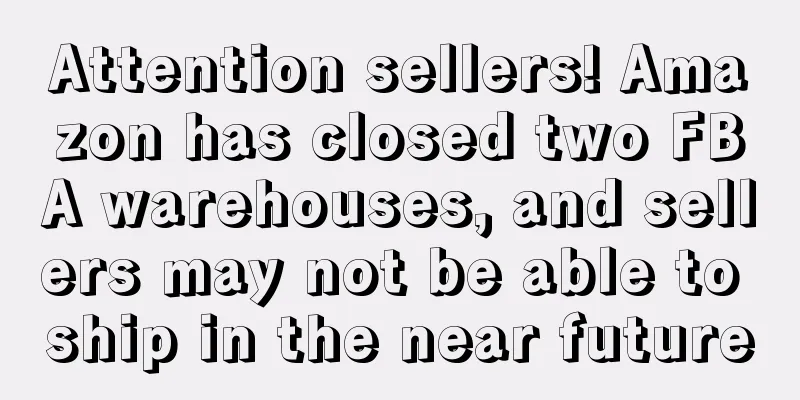Attention sellers! Amazon has closed two FBA warehouses, and sellers may not be able to ship in the near future

|
Goods shipped to the United States that do not comply with the new regulations will be detained Original announcement Amazon The U.S. Customs and Border Protection (CBP) has released new shipping guidelines on how to properly ship your inventory to Amazon logistics centers in the United States. The new shipping guidelines require sellers to provide the correct information in the correct format to help avoid your inventory being detained or delayed by CBP during the import process. For FBA goods eligible for duty-free entry into the United States, sellers must provide CBP with information about their identity, such as name or company name, through a shipping manifest or customs entry filing. Amazon recommends sellers use the following format: [Legal Name of Seller] c/o FBA Amazon Logistics Center Address When shipping imported goods to an Amazon fulfillment center, the fulfillment center may be listed as the consignee on your shipping documents. Here are some examples of how this should appear on your shipping documents: Amazon recommends that sellers consult with their carrier or customs broker for further guidance on your shipment. To learn more about how to properly format the product owner on customs documents, please review the CBP Guidelines. UPS requires that goods shipped to the US must include the FBA number Canada closes 2 FBA warehouses Limit the number of goods entering the warehouse according to different storage types Limit the number of goods entering the warehouse according to different storage types |
>>: Nearly 20,000 units sold in 20 days! Amazon's unpopular products also have high sales
Recommend
What is Bluetech Forum? Review of Bluetech Forum
Founded in 2012, Bluetech Forum, a subsidiary of B...
Amazon forced to hand over seller information? EU to impose sanctions
The European Parliament is currently pushing forw...
What is Ireview Home? Ireview Home Review
Ireview Home is a discount website that is control...
What is Farfetch? Farfetch Review
Farfetch is a global fashion luxury website that c...
A new round of consumer law review is coming! Large-scale number scanning has begun
Spring Festival holiday approaching Amazon has sta...
Amazon officially announced a big promotion for Prime members! New tools to help sellers get free traffic?
It is learned that early this morning, Amazon Glob...
Sales plummeted in February! Amazon US sellers' orders plummeted, and crises are lurking!
At the beginning of February, Amazon's US sale...
UK VAT registration address exposed! Affecting tens of thousands of Chinese companies!
How much sorrow can one have? Just like the strict...
Sales soared 10,000%! Ukrainian-related products are selling like hot cakes on Amazon US
It is learned that after the outbreak of the war b...
You see risks, I see opportunities.
Source: Know Nothing I still remember when I firs...
Teach you step by step how to register a US trademark yourself
There are several main steps to successfully regis...
What is Upfluence? Upfluence Review
Upfluence is an influencer analysis and contact to...
Breaking news! A large number of "problematic" buyer reviews have been removed. How to deal with the wave of review deletions during the peak season?
Recently, some sellers said they received emails f...
What is Dibz? Dibz Review
Dibz is an easy-to-use SEO tool that allows users ...
What is Parachute? Parachute Review
Parachute is an Internet home furnishing brand ded...









